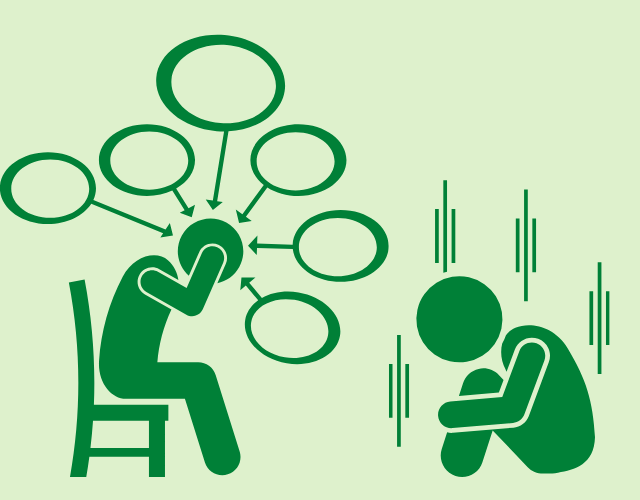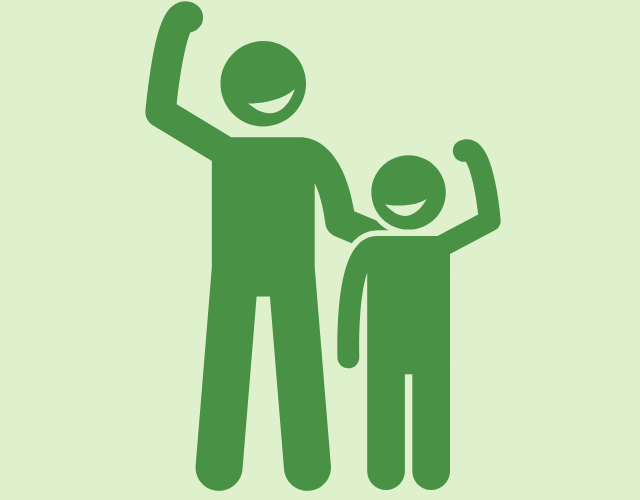Since President Joe Biden’s inauguration last month, the country has been newly abuzz with talk about increasing the minimum wage to $15.
Coverage in East Texas has focused on the negative impact to businesses or, on the other side, how the economy would be stimulated by low-wage workers having more money in their pockets (not to mention increased productivity and reduced turnover).
But what else is correlated with increased wages?
A lot, it turns out.
This is especially important in communities like Tyler, where we previously reported on the city’s income inequality. When that story was written in 2017, about one out of five Tylerites were living on less than $12,000 for an individual, or $25,000 for a family of four. The upcoming Census will help reveal how much that’s changed.

According to MIT’s Living Wage Calculator, a living wage is an estimate of how much you will need to cover basic living expenses. In Smith County, a living wage for a single person is $11.76 an hour. The poverty wage, or what someone would make per hour to meet the federal definition of being in poverty (which is also up for debate), is $6 an hour. Texas and the US minimum wage was set at $7.25 in 2009. According to the Bureau of Labor Statistics, inflation has gone up 21% since then.
A living wage and overall wellbeing
“Overall wellbeing is directly affected [when not earning a living wage],” said Christina Fulsom, founder and CEO of the East Texas Human Needs Network (ETHNN) in Tyler. “This is including how much time parents get to spend with their children, because they are working multiple jobs, and trying to find ways of getting there and getting back. Both children and adults are not taking care of their health, and the stress that comes with poverty makes chronic illnesses worse.”
Fulsom also spoke to the toll on mental health when a household earns less than a living wage. “We know people in poverty have greater rates of anxiety and depression. All of those things affect an entire community.”
Fulsom said lower wage earners can appear less reliable as employees due to mental and physical health issues that stem from earning less than a living wage.
“Unfortunately it feeds into the misconception that people in poverty are lazy, when that is so far from the truth,” she said. “People in poverty work a greater number of hours than people who are middle class and wealthy, and yet have less to show for it, simply because their wages are too low to make ends meet.”
Pam Jacobsen, poverty education coordinator at ETHNN, talked about the difficulties of working multiple part time jobs. “Workers who aren’t making a living wage often don’t have full-time jobs.” Jacobsen said she works with Smith County parents often working 30 hours at one job, 30 hours at another, but who still won’t qualify for medical insurance, paid time off or employer retirement programs.
A living wage and mental health
As The Tyler Loop has reported before, mental health needs serious attention in East Texas, and earning low wages is linked to poor mental health outcomes.

“A large and robust body of evidence links poverty to poor psychological outcomes,” according to an article from the American Psychological Association. Data from the National Institute of Mental Health indicates “low-income individuals are two to five times more likely to suffer from a diagnosable mental disorder than those of the highest socioeconomic group. Poverty’s effects on children are also particularly significant — and long lasting. Poor children are at a greater risk for problems including lower IQ, poor academic achievement, poor socioemotional functioning, developmental delays and behavioral problems.”
Not only that, a recent study suggested raising the minimum wage could lower suicide rates, and Smith County has one of the highest suicide rates in the state.
A living wage, family violence and childhood trauma
Having a higher minimum wage could also prevent family violence. According to the Prevention Institute, “When communities have local ownership of assets, accessible and stable employment that pays living wages, and access to investment opportunities, they are more likely to thrive. However, when communities face high unemployment rates and weak economic and social policies, for example, their risk for multiple forms of violence increases — from intimate partner violence, sexual violence, and child maltreatment to community violence.”

One of the biggest predictors of negative health outcomes are what the CDC calls Adverse Childhood Experiences (Dr. Nadine Burke Harris, who is now the Surgeon General of California, gave a TED Talk on the topic). One of the best ways to prevent traumatic experiences in childhood? Economic policies that support families, according to the CDC.
What do poor mental health, suicide, and violence cost our communities? Does it cost more than what it would cost us if the minimum wage were raised?
City of Tyler employees

In 2018, the City of Tyler increased its minimum wages for city employees to $12 an hour, although this excludes certain part-time city workers whose jobs require a high school diploma and not a college degree, such as crossing guards and library pages. Tyler and other cities around the state are prohibited from increasing the minimum wage for all businesses because of a 2003 Texas preemption law that blocks local governments from setting a minimum wage higher than the state.
What low incomes costs all of us
The City of Tyler police budget does not provide a breakdown on how much different crimes cost the city, and calculating the cost of any crime is difficult given all the ripple effects. The US Government Accountability Office conducted a study in 2017 to try to answer this question. The estimated total cost of all crime for the country ranged from $690 billion, $1.57 trillion, to $3.41 trillion, adjusted to 2016 dollars.
In the case of suicide, they estimated the value of a life to be $1.2 million to $8.6 million in 2016 dollars. This does not include other intangible costs of suicide, such as cost of any mental healthcare for families or costs for authorities who work a suicide case.
The anxiety and depression that stem from not earning a living wage aren’t crimes, but they still have an economic cost. According to a 2016 study, “Based on data from 2010, the global direct and indirect economic costs of mental disorders were estimated at $2.5 trillion. Importantly, the indirect costs ($1.7 trillion) are much higher than the direct costs ($0.8 trillion).”
The legislation that raises the minimum wage may not pass. But given inflation that will continue to rise and all the implications to our communities, can we afford it not to?
Love what you're seeing in our posts? Help power our local, nonprofit journalism platform — from in-depth reads, to freelance training, to COVID Stories videos, to intimate portraits of East Texans through storytelling.
Our readers have told us they want to better understand this place we all call home, from Tyler's north-south divide to our city's changing demographics. What systemic issues need attention? What are are greatest concerns and hopes? What matters most to Tylerites and East Texans?
Help us create more informed, more connected, more engaged Tyler. Help us continue providing no paywall, free access posts. Become a member today. Your $15/month contribution drives our work.







